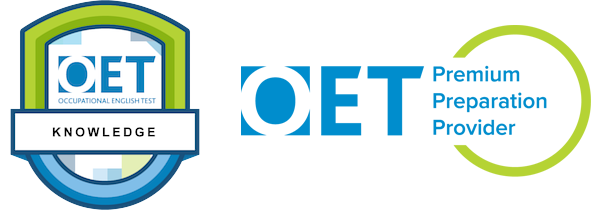
YES!!! The updated Occupational English Test will take effect on 9 September 2018.
Not many changes are made in the Spoken or Written modules, but the Listening and Reading modules have changed and ‘understanding’ the extracts is now the ‘Key’ to the assessment rubrics. A few changes and a lot of guidance in your study will make the new format just as easy to answer and that is what we at Acumen provide.
|
Section |
Duration/ Proforma |
Task Target for Scoring Rubrics |
|
Part A |
15 minutes
Summary Task Quick reading task. Strictly timed.
3-4 short texts of approximately 650 words related to a single topic are given. |
Assessment of ability to source information from multiple texts, to synthesize information in a way that is easy to understand and is meaningful too. Tests the ability to skim and scan material in order to retrieve information quickly.
A summary paragraph is given with about 25-35 blanks in total and the assessment is based on the correct filling in of the missing words. |
|
Part B & C |
45 minutes. Multiple Choice Questions. Careful reading tasks. Ability to identify details. Two long presentation passages of 600-800 words each will be given. |
Your ability to read, comprehend, accurately understand and interpret the given comprehensive texts on health related topics, similar to those found in current academic or professional journals of national and international calibre is assessed.
You are assessed on the basis of your answering the set of 16-20 multiple choice questions in total based on this text. |
|
TOTAL |
60 minutes |
The Reading for healthcare professional test(OET 2) now consists of three parts with a total of 42 question items, taking a total of 60 minutes to complete. The topics are of generic healthcare interest and are therefore accessible to candidates across all professions.
The Reading sub-test structure:
Part A – expeditious reading task (15 minutes)
Part A. assesses one’s ability to locate specific and precise information from 4 brief texts quickly but efficiently. The four short texts generally relate to a single healthcare topic, and one must answer the following 20 questions in an allocated time period. The 20 questions consist mostly of match the following, sentence completion and short answer questions.
Part B and Part C – careful reading tasks (45 minutes)
Both parts comprise of multiple-choice questions.
Part B assesses one’s ability to identify fine detail, gist or main points of six short texts sourced from the healthcare workplace (100-150 words each). The texts may consist of extracts of hospital guidelines, manuals, policy documents or other internal administrative communications, such as emails or memos. For each of these texts, there is mostly one three-option multiple-choice question.
Part C assesses one’s ability to identify detailed meaning and opinion from two texts on topics of interest to healthcare professionals (800 words each). For each text, one has to answer eight four-option multiple-choice questions.
How has the assessment criteria for the reading skills for OET changed for the new occupational English test for reading , OET2 ?
Reading Part A (the expeditious reading task) tests one’s ability to skim and scan quickly (for that purpose, Part A is strictly timed) across different texts on a given topic in order to locate specific information and all 20 question items must be completed within the allocated 15 minutes. To complete the task successfully, the conventions of different medical text types and the presentation of numerical and textual information need to be understood clearly.
Reading Part B tests one’s ability to understand the detail, gist or main point of complex texts commonly found in the healthcare workplace. To complete the task successfully, specific ideas need to be identified at the basic sentence level.
Reading Part C tests one’s ability to understand the explicit or implied meaning as well as the attitude or opinion presented in a longer text. To complete the task successfully, the relationship between ideas at sentence and paragraph levels, both need to be identified. Part C also tests one’s ability to accurately understand lexical references and complex phrases within the text.
Assessors who mark the Reading test for OET are qualified and highly trained individuals, who undergo rigorous training before they become assessors. Candidate responses are not only assessed against an established marking guide but during the marking session, any and all problematic or unforeseen answers are referred to a sub-group of senior assessors for guidance on assessment criteria. So no chances exist for any disparity or negligence.
Most common Queries arising from this new structure:
How are the marks for the new OET 2 Reading sub-test distributed?
There is a total of 42 marks available in the Reading sub-test, Part A accounts for 20 marks, Part B accounts for 6 marks and Part C accounts for 16 marks.
Are the answers for the OET 2 Reading sub-test written in the question booklet itself?
In Part A the answers are to be clearly written in the spaces given in the question booklet.
In Part B and Part C, you must shade the circle next to the appropriate answer in your answer booklet. Answers written anywhere else in your booklet will not be assessed or marked.
It would be a good idea to use sample tests provided on the OET sites and other coaching sites to familiarize oneself with the different task formats one might find in the new reading test for OET.
Do my answers have to use more or less, the same words as given in the texts or do I paraphrase or summarize?
Yes, in Part A you must use exactly the same form of the word or short phrase as given in the four texts but paraphrasing and/or summarizing will be required in Parts B & C.
Can I use abbreviations like ‘etc’ or ‘AIDS’ in the Reading sub-test?
Abbreviations are strictly not allowed in any form in the Reading sub-test unless they appear in the question texts.
Are some spelling mistakes allowed or will I bear negative m,arking for my spelling mistakes?
Yes, you must use correctly spelled words in the Reading sub-test to get marks. Responses that are not spelled accurately will not receive any marks. American and British English spelling variations are however accepted, e.g., foetus and fetus are both acceptable. Please note that the Reading sub-test structure is different from the Listening sub-test structure especially in the way misspellings are treated in the two sub tests.
Do I have time to check my answers for the Reading sub-test?
You will not be given extra time at the end of the sub-test to check your answers, and it is up to you to manage your time. The test is designed so that the time available is enough for you to read, choose your answers, and check your work.
Please remember that there is a strict time limit for Part A (the quick reading task), and Part A answer sheets will be collected from you after 15 minutes. So, you will be given no time to re check your Part A answers later on in the test.
Follow our blog at Acumen…….WATCH THIS SPOT FOR OET 2018 Test Updates…………
0 Comments
Leave a reply
You must be logged in to post a comment.






